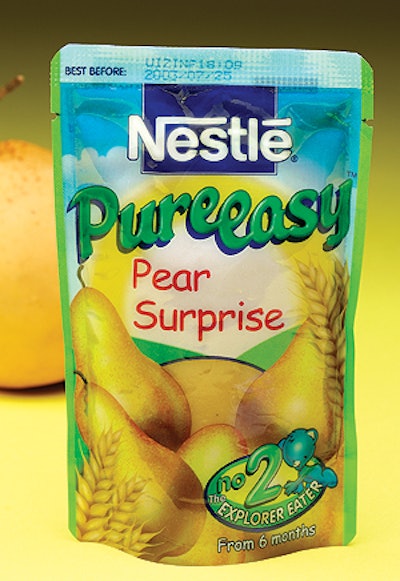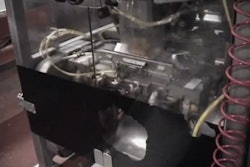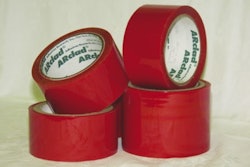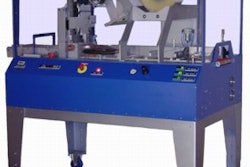
Nestlé Ltd., Randburg, South Africa, has shaken up the region’s baby food category like a rattle with retorted stand-up pouches introduced locally about a year ago. Pureeasy is available in five 80-mL and three 100-mL (shown) varieties.
The pouches are composed of a nonfoil structure of 48-ga PET reverse-printed in gravure in seven colors/48-ga PET copolymer with glass coating/2.4-mil cast polypropylene. The preformed pouches are supplied by CLP Industries Ltd., Israel, which has a U.S. division: CLP Packaging Solutions (Fairfield, NJ). The stand-up pouches have a clear view window and carry a nine-month shelf life that’s identified with “best before” coding along the top seal. The packs have a tear notch on both edges along the top; a thin, laser-scored mark for easy opening ensures that the pouch tears straight across the top front panel.
The products are Nestlé South Africa’s first entry into the homogenized baby food market, according to Zanele Bacela, product manager, Weaning & Growing Up Foods, Nestle Southern & East Africa Region. She calls the products a bold step in a market where all other pureed products are in glass jars. Almost too bold—she admits that reaction has been varied.
“Positive responses relate to the visual attributes in that the pouch is innovative, different, and attractive—attributes that consumers associate with freshness,” Bacela says. “The pouches are seen as durable and unbreakable, and are lightweight for carrying and ideal for traveling. The initial negative response was ‘discomfort’ as the packaging breaks all existing packaging codes within the category. Mothers are used to feeding the baby straight out the jar. The fact that one can ‘feel’ the product through the pack was another cause for concern. Consumers are also used to resealing jars if contents remain, but they cannot reseal the pouch once it’s opened. However, once the product has been tried, it delivers on taste, and the consumer goes back for more.”























